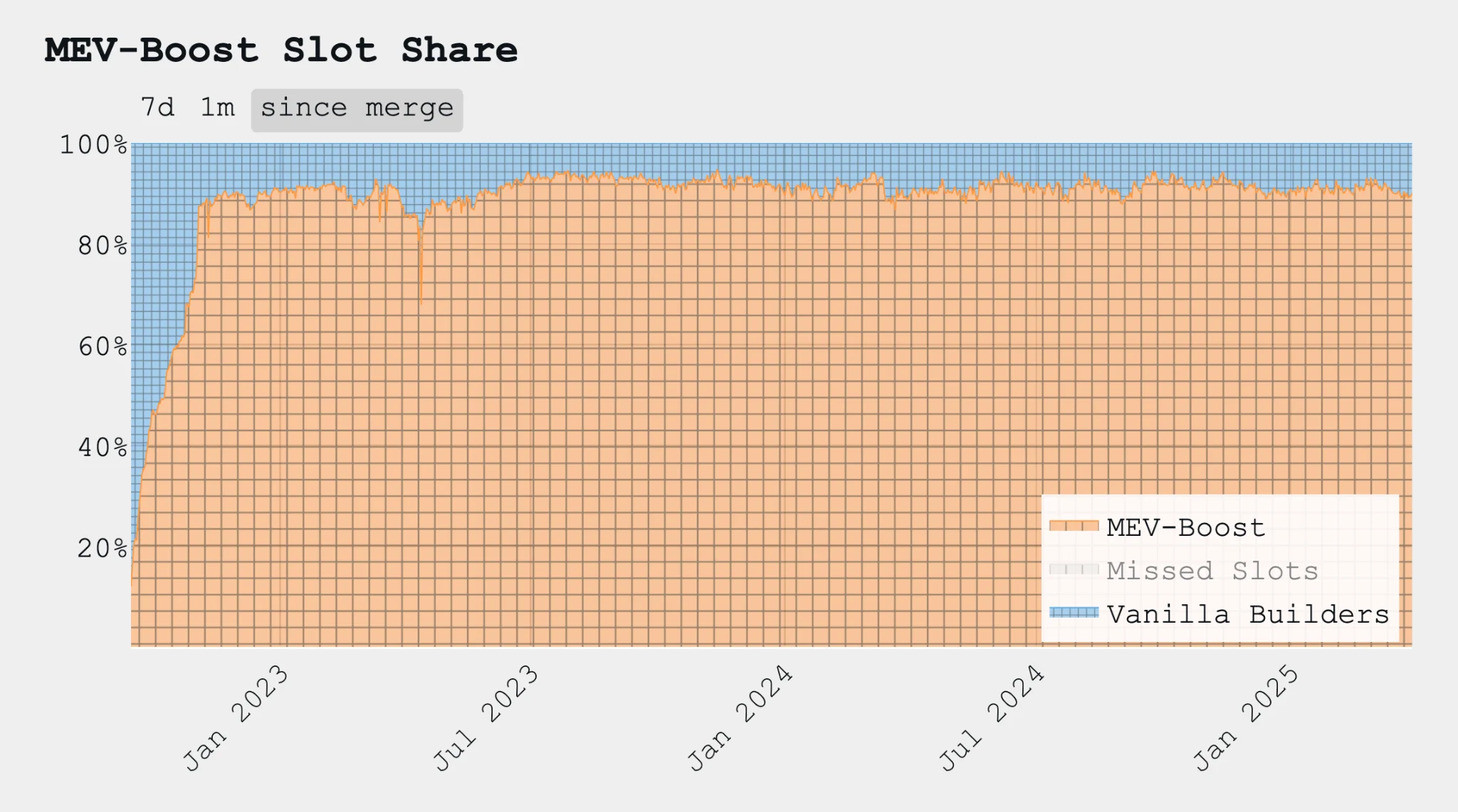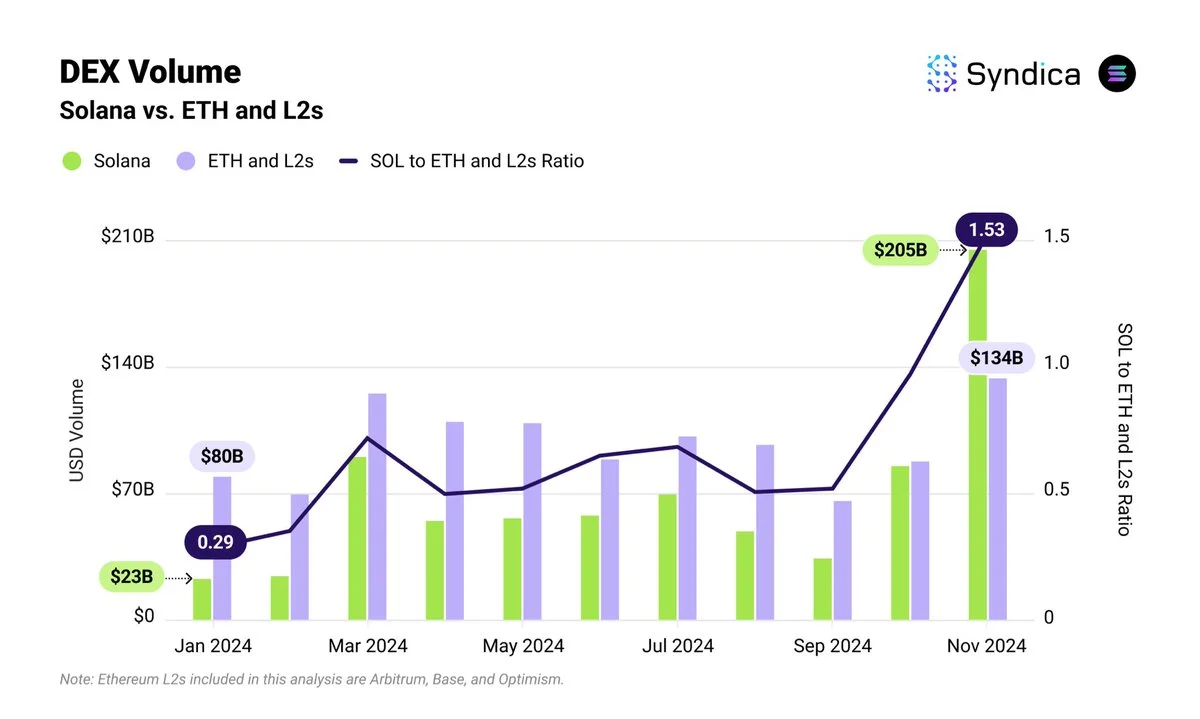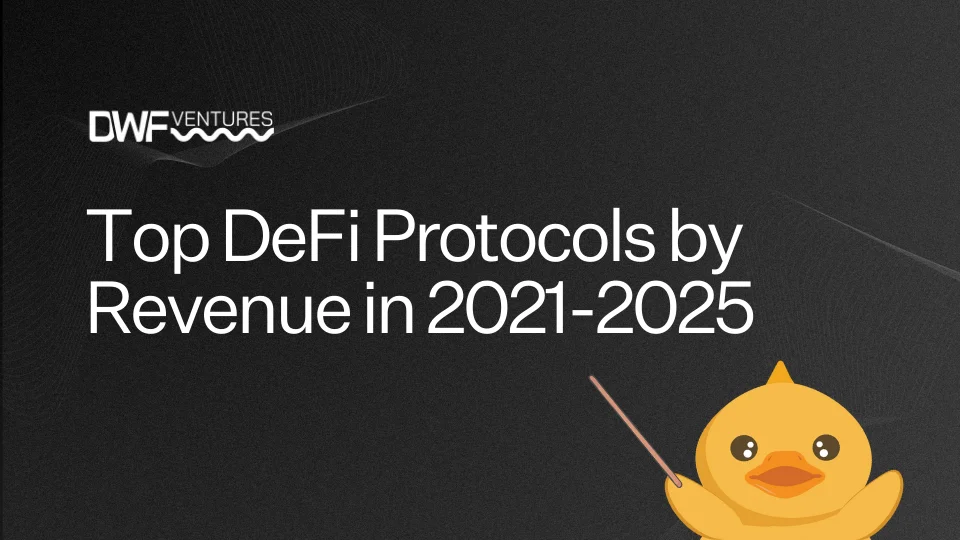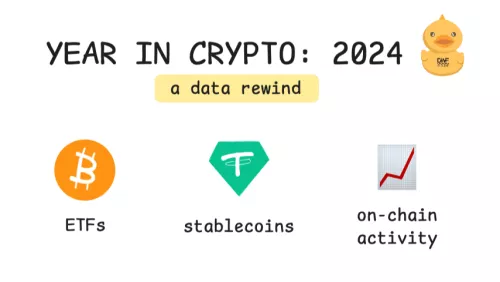When the crypto market experiences downturns, users often return to fundamentals, focusing on protocols that generate real revenue. This trend is especially relevant in DeFi, where economic sustainability and transparent metrics become key success factors.
DWF Ventures analysed historical data from DefiLlama to identify the top revenue-generating protocols from 2021 to the present. This analysis reveals major trends, highlights successful models, and offers insights into what might come next.
Top 10 Protocols by 90-Day Rolling Fees as of 17 Feb 2025. Video by DWF Ventures.
2021: DeFi Summer and the Liquidity Wars
Let’s start with the foundations of DeFi’s growth. The DeFi Summer of 2021 marked a surge of activity. The Ethereum mainnet remained at the centre of operations, primarily involving trading and swaps. During this time, platforms like Uniswap, SushiSwap, and PancakeSwap became market leaders.
A phenomenon of yield farming, a DeFi mechanic where users are able to lock tokens in a liquidity pool and earn rewards from fees paid for swap operations, was also a crucial aspect. It led to the popularity of the vote-locking model that allows users to vote on future token emissions. Convex Finance, known for its role as a decentralised exchange and automated market maker protocol for low-slippage trades, emerged as a notable player. Similar protocols began emerging on Fantom (now Sonic Labs) and Avalanche. This wave of competition led to the so-called Curve Wars — a race for crypto liquidity where different protocols offered the highest yields, greatly benefiting end users.
But as the DeFi landscape continued to evolve, new trends emerged, and certain protocols turned out to be the top fee generators, consistently capturing value from user activity. But why are fees such a critical metric for assessing success?
Why Are Fees So Important in DeFi?
So how do we measure that revenue and assess a DeFi protocol’s true impact? One of the most reliable indicators is the fees they collect for swapping crypto via liquidity pools. In DeFi, fees show how much a protocol is really being used and how valuable it is. Unlike metrics like TVL (Total Value Locked) or user counts, fees are harder to fake or inflate.
They also help value tokens, similar to how the price-to-earnings (P/E) ratio works for stocks. Investors are paying more attention to this metric because, as mentioned, TVL, or user counts, can be inflated or drop drastically within a very short period.
2022: NFTs, Staking, and Black Swan Events
In 2022, token trading slowed down, but NFTs took the spotlight. Marketplace platforms like LooksRare and OpenSea became popular as major brands and users explored new ways to earn money through NFT flipping, staking, royalties from secondary sales, and play-to-earn games.
Staking also grew in popularity as users searched for alternatives to yield revenue models. Lido Finance, a liquid staking protocol, became a key player by allowing users to stake assets like Ethereum and receive transferable tokens (e.g., stETH) that earn staking rewards.
Later, when Ethereum transitioned to the Proof-of-Stake (PoS) model in September 2022, demand for liquid staking grew even further.
Even with big crises like the Terra's UST depegging and the FTX collapse, DeFi protocols continued to generate fees, proving that reliable revenue generation is a strong indicator of resilience.
2023: MEV and Real Revenue

As liquid staking gained traction, users increasingly prioritised protocols that could generate real, sustainable revenue.
After the Ethereum Merge, Flashbots gained attention with their MEV-Boost tool, created to tackle a long-lasting issue of the Maximal Exctractable Value (MEV) exploit in Ethereum. This solution allowed validators to outsource block building to searchers, resulting in exponential revenue growth. According to MEV-Boost Dashboard, more than 90% of validators adopted this tool.
Following the Black Swan events of 2022, including major depegs and exchange collapses, users began focusing on protocols with proven, reliable revenue models. This shift in focus led to a surge in popularity for platforms like GMX, which generates revenue primarily through trading fees, and Aave, which earns revenue through interest payments from borrowers. Additionally, SocialFi protocols like Friend.tech emerged with a fresh concept that allowed users to trade social profiles, sparking discussions about new monetisation strategies and social interaction within Web3.
2024: Solana Takes Over

Building on the momentum of revenue-focused protocols, the DeFi landscape began to shift toward new ecosystems offering unique advantages. In 2024, activity began shifting from EVM chains to Solana, where trading and liquid staking became dominant.
Jupiter Exchange, a decentralised exchange aggregator on Solana, and Jito Network, the first MEV-powered and largest liquid staking pool on Solana, emerged as leading protocols.
Another standout application, Pump.fun, established itself as a prevailing player in the memecoin market. By leveraging Raydium Protocol’s liquidity pools and automated market maker (AMM) infrastructure to facilitate trades, Pump.fun not only enhanced its own visibility but also drove liquidity and trading activity to Raydium.
At the same time, synthetic dollar protocols also gained traction. Ethena, built on Ethereum, introduced USDe, a synthetic dollar designed to be a scalable, crypto-native solution. It works by hedging Bitcoin, Ethereum, and Solana assets using futures contracts and holding stablecoins like USDC and USDT. Meanwhile, Sky.money serves as a non-custodial gateway to the decentralised Sky Protocol, which allows users to convert their DAI into USDS while offering incentives like the Sky Savings Rate (SSR) and Sky Token Rewards (STRs).
2025 and Beyond: What’s Next?
As synthetic dollar protocols and Solana’s dominance continue to shape DeFi, new blockchains are emerging with the potential to disrupt the landscape.
Protocols like Berachain’s Proof of Liquidity and new applications from MegaETH and Monad could become significant players as they mature.
For new protocols to stand out, they need to offer superior performance or bring something entirely new to the market. Demonstrating real revenue generation will remain essential to maintaining relevance.
Conclusion
The success of established DeFi apps proves that consistency and reliability are essential. Platforms with strong trading or yield models continue to thrive because they offer dependable experiences that build user trust and foster loyal communities.
For newer apps to succeed, they must go beyond existing solutions, either by improving performance or introducing entirely new experiences. As DeFi evolves, only those offering truly valuable and innovative features will secure their place in the market.
If you are building in the space of derivative protocols, feel free to contact DWF Ventures to discuss potential partnerships with our crypto venture capital fund.



